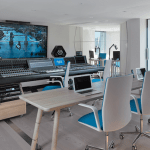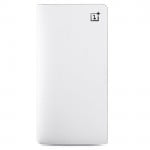
In 2008, the MacBook Pro updated to a unibody design, and the next big evolution came around only in 2012 when the much slimmer Retina display rocking MacBook Pro variants were unveiled. Photo: AP
“Hello Again” is the tagline Apple is using for this year’s Mac event, which takes place later on Thursday. It might very well have been, “we just met you last month, but here we are again, because we missed you too much”, but no matter. That is simply because this year’s MacBook line-up could be a generational upgrade, something that happens only once every few years. And not to forget, the iMac computing devices.
There seems to be a major gap between major evolutions as far as Mac devices are concerned. It was in 1984 when Apple introduced the first Macintosh to the gasps of a captivated audience, and only in 1998 did the entire thing evolve into the first-ever iMac. And it wasn’t until 2007 that iMacs adopted aluminium and the Retina Display arrived in 2015. Major MacBook redesigns are also few and far between. In 2008, the MacBook Pro updated to a unibody design, and the next big evolution came around only in 2012 when the much slimmer Retina display rocking MacBook Pro variants were unveiled.
Fast forward four more years, and here we are, on the cusp of another evolution. Yes, expectation is that the latest line-up of MacBooks will be slimmer and lighter than the previous generation, but all attention is on the potential arrival of the touch panel above the display, as a secondary input method. It is expected that this dynamic toolbar will offer quick access options contextually, based on the app the user is running on the MacBook at the time—Spotify controls when you are listening to music and Pages short-cuts when you are frantically working on documents, for example. Incidentally, earlier on Thursday, Apple perhaps inadvertently killed the surprise by releasing a photo of the upcoming MacBook Pro, complete with the touch bar, while giving a demo on how to use Apple Pay services on new devices.
It could, perhaps, be as important as the clickwheel in the iPod Classic many years ago, or 3D Touch on the iPhone—only time will be able to testify to that, but the potential is very much there.
Then there is the aspect of the design. Over the past few years, Apple has learnt a lot from the iPad Pro 12.9, the smaller iPad Pro and also the new MacBook, and all that could be incorporated into the new MacBooks. Whether this indicates the demise of the MacBook Air line-up remains to be seen, but to be honest, the reports of the Air’s death have been greatly exaggerated over the past year or so. Actually, it wouldn’t take too much effort to take the Air back to the top of the pile. It is ultra slim (Windows laptops are still struggling to come close), packs in a good amount of performance that lets you run Photoshop as well and has excellent battery life—just give it a Full HD resolution display, maybe a couple more ports and that’s it.
Safe to say that Thursday’s announcement will not be about just space fillers. It will not be about just updating the laptops with newer generation processors and graphics, and maybe even faster storage. Our understanding is that this is that critical time in MacBook’s life, when it is under increasing threat from convertible computing devices and indeed even phones, which will define its direction at least for the next few years.
If you had been sitting on the fence contemplating buying a MacBook for the first time, or to upgrade your existing one, we would suggest holding off for the next few weeks. All the new computing devices that Apple announces will arrive on our shores over the next 3-4 weeks, if the shipping trends of the previous few years are anything to go by.











